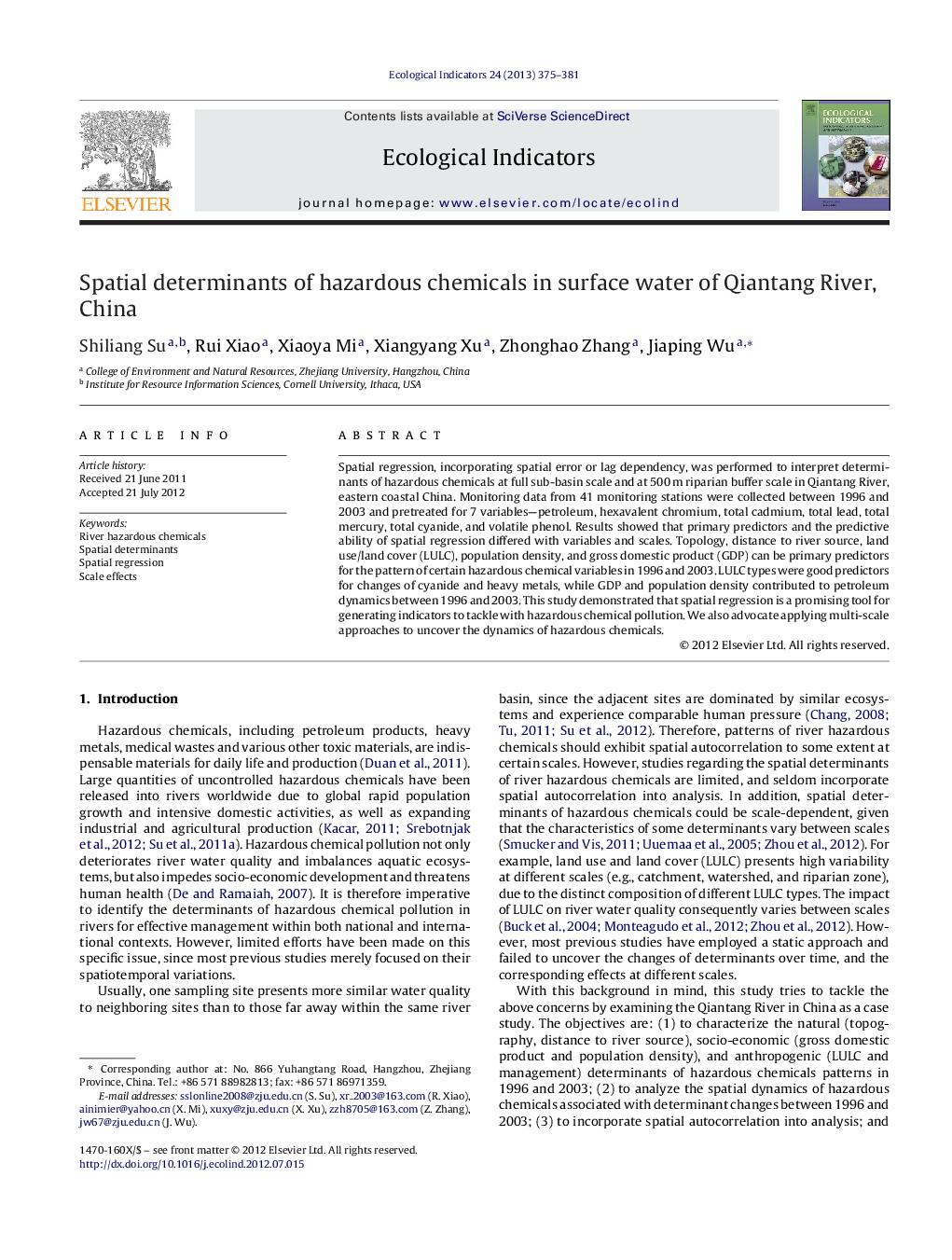| Article ID | Journal | Published Year | Pages | File Type |
|---|---|---|---|---|
| 4373657 | Ecological Indicators | 2013 | 7 Pages |
Spatial regression, incorporating spatial error or lag dependency, was performed to interpret determinants of hazardous chemicals at full sub-basin scale and at 500 m riparian buffer scale in Qiantang River, eastern coastal China. Monitoring data from 41 monitoring stations were collected between 1996 and 2003 and pretreated for 7 variables—petroleum, hexavalent chromium, total cadmium, total lead, total mercury, total cyanide, and volatile phenol. Results showed that primary predictors and the predictive ability of spatial regression differed with variables and scales. Topology, distance to river source, land use/land cover (LULC), population density, and gross domestic product (GDP) can be primary predictors for the pattern of certain hazardous chemical variables in 1996 and 2003. LULC types were good predictors for changes of cyanide and heavy metals, while GDP and population density contributed to petroleum dynamics between 1996 and 2003. This study demonstrated that spatial regression is a promising tool for generating indicators to tackle with hazardous chemical pollution. We also advocate applying multi-scale approaches to uncover the dynamics of hazardous chemicals.
► Determinants of hazardous chemical patterns differed with variables and scales. ► LULC were good predictors for cyanide and heavy metal changes. ► GDP and population density contributed to petroleum dynamics. ► Spatial autocorrelation should be incorporated into analysis. ► Multi-scale approaches should be applied.
